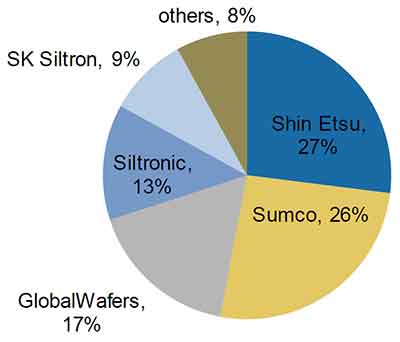Silicon Wafers for Internet of Things (IoT) Research
200mm Silicon Wafers Help IoT Scientists Accelerate their Research
The use of 200mm silicon wafers in IoT fabrication has made it possible to reduce the cost of these components. With a lower cost of production and a reduced time to market, IoT manufacturers are looking for more affordable and scalable solutions. Consequently, 200mm wafers are now an increasingly popular choice for small-lot production.
Get Your Quote FAST!
Silicon Wafers Used to Fabricate IoT Devices
The growth of IoT-connected objects has fueled the development of new technologies, such as high-resolution image sensors and system-on-chip products. The automotive industry is among the first to adopt 200mm wafers, which have since been expanded to other industries. The industrial and medical markets have also benefited from the growth in 200mm platform sales, but consumer electronics is driving the most rapid growth. The growing market for digital products is spurred by the advent of "more-than-Moore" devices incorporating sensors, RF communication, and processing power into one device.
 Current silicon fabs are at capacity, and many chip manufacturers are retooling existing facilities and building new ones. However, the increased capacity required for new manufacturing requires additional equipment, and that will not be available until the year 2022. So, the industry is turning to remanufacturing older equipment to manufacture smaller wafers. That way, the industry can take advantage of its existing capacity and continue to innovate and grow.
Current silicon fabs are at capacity, and many chip manufacturers are retooling existing facilities and building new ones. However, the increased capacity required for new manufacturing requires additional equipment, and that will not be available until the year 2022. So, the industry is turning to remanufacturing older equipment to manufacture smaller wafers. That way, the industry can take advantage of its existing capacity and continue to innovate and grow.
Today's technology is largely compatible with existing 300mm and 200mm wafers. This means that these fabs can continue to produce the components they need for the IoT market. For example, many of the components in mobile phones and automotive vehicles require RF and analog chips. Both of these can be manufactured on 200mm silicon wafers. This type of semiconductor is rapidly growing, and despite the short supply, the demand is increasing. Because of this, companies like Advantech are ready to assist their customers with the maintenance of phased-out computer platforms based on the 200mm process.
The market for 200mm silicon wafers is expected to grow rapidly in the coming years. The cost of 200mm silicon wafers is largely determined by the size of the feature-size needed for IoT applications. The cost of 100mm silicon is required to meet the needs of the IoT market. Moreover, 200mm silicon wafers can meet the needs of the automotive industry.
While 300mm silicon wafers are essential for IoT applications, the growing demand for 200mm silicon is driving the development of IoT devices. The demand for 200mm wafers will continue to grow for the next few years, largely due to the increasing demand for IoT components. The new technology will also drive the need for cheaper devices. There is a shortage of this material, which will lead to higher prices.
The demand for 200mm silicon wafers will drive the development of IoT-enabled devices in a variety of industries. For instance, the Internet of Things will link consumer devices, appliances, and healthcare systems. In other words, the growth of IoT will lead to a significant reduction in manufacturing costs. In the future, the growth of IoT-enabled sensors will make everything smarter and more affordable.
The demand for this material is rising dramatically for IoT devices. The demand for this material will reach $20 billion by 2030, and the industry is preparing for this expansion. For the next five years, the market will increase substantially, and the growth of the technology will continue to be strong. The use of 200mm silicon wafers will be critical in the Internet of Things.
In the future, IoT technologies will not only connect cars, but also wearables, appliances, and other connected objects. The demand for this technology will lead to an exponential increase in the number of IoT applications. The growth of this technology will spur the development of more advanced, smarter, and more affordable devices. But the question is: how can we prepare for this trend?
